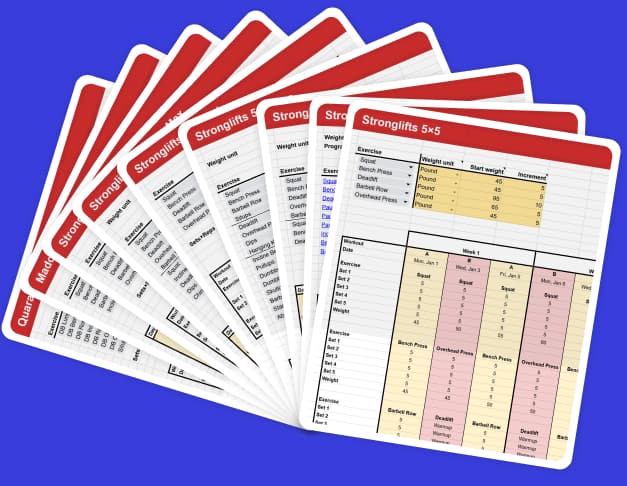he 5×5 workout is a strength and muscle building program that’s been around for almost seven decades.
The program has stood the test of time due to its simplicity and effectiveness. It’s the most efficient way to get results without spending countless hours in the gym. That’s why 5×5 remains popular today.
In this article we’ll go over the history of the 5×5 workout, including its origins and the many authors who made contributions to the program. I’ll also share how the Stronglifts 5×5 workout came to be.
Contents
Join the Stronglifts community to get free access to all the spreadsheets for every Stronglifts program. You’ll also get 17% off Stronglifts Pro, and daily email tips. Enter your email below to sign up today for free.
Who Created The 5×5 Workout?
The origins of the 5×5 workout are unclear. It’s impossible to say who invented the program (it’s definitely not me). What’s sure is that the 5×5 workout is at least 67 years old. It’s probably older than that.
In the mid-20th century, the old time lifters mostly did basic workout routines centered around the Squat, Bench and Deadlift. Commercial gyms didn’t exist yet and so they had limited equipment available. Despite this, they were able to achieve impressive physiques before drugs even existed (1, 2).
Unlike most gym goers today, the old time lifters didn’t only focus on building muscle to look good. They also wanted to be strong and competed in strength sports. For example, the bodybuilder John Grimek won Mr America in 1940 and 1941, and Mr Universe in 1948 (3). But he also competed in Olympic weightlifting. In 1936 he placed ninth at the Olympic Games in Berlin (4).
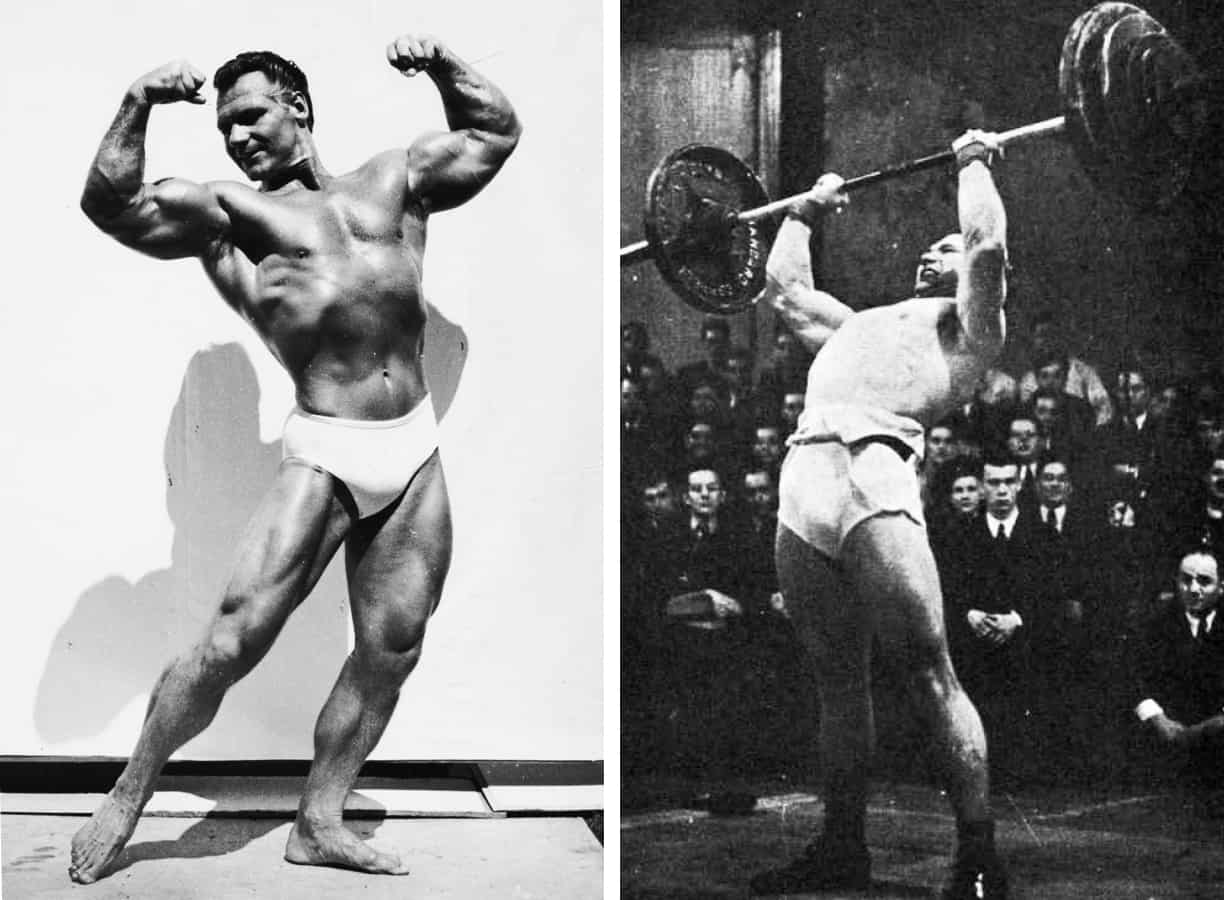
Full body routines to build strength and muscle were the norm amongst the old time lifters. They only used split routines when they came closer to a bodybuilding competition. Most of the year they did basic routines that centered around the big lifts, like the 5×5 workout.
Reg Park: The Father of The 5×5 Workout
Reg Park was a British bodybuilder who won the Mr Universe in 1951, 1958 and 1965. He could Squat 605lb and Deadlift 700lb (5). He was the second man to Bench 500lb, and the first bodybuilder to do so (5, 6). He was also an actor who starred in five sword and sandal movies like Hercules (7).
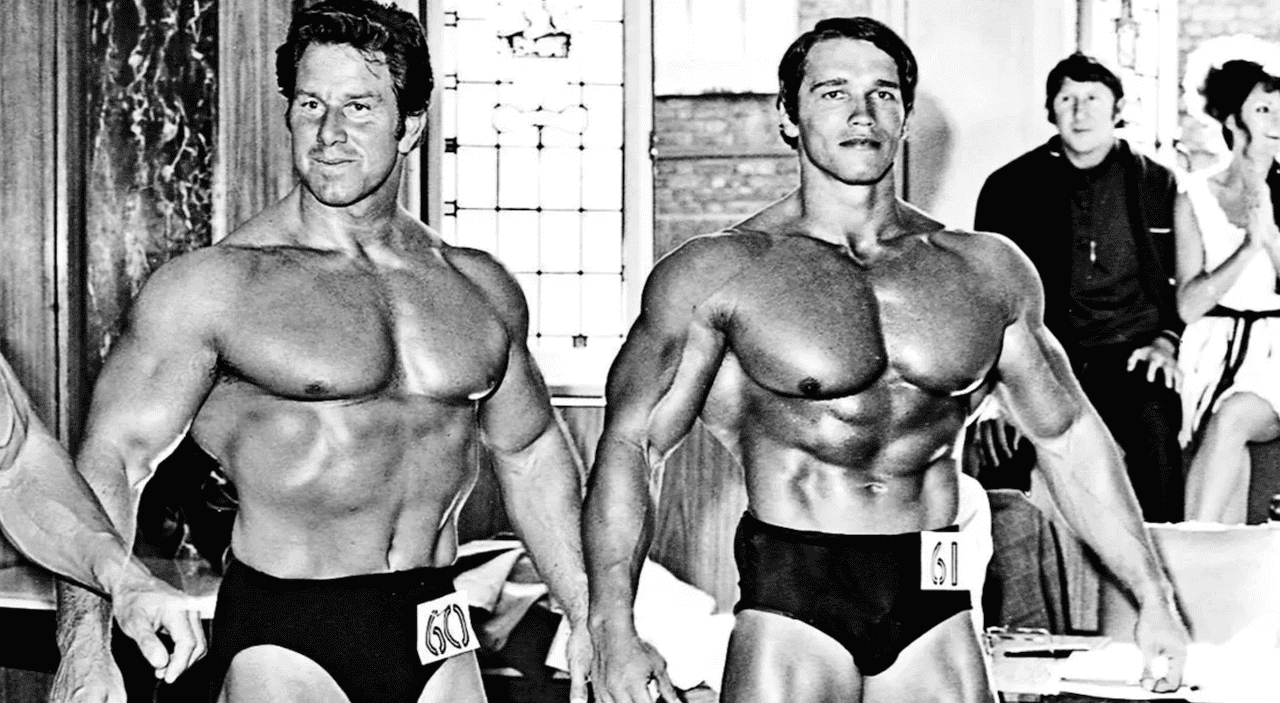
Reg Park later became Arnold Schwarzenegger’s mentor (8, 9). When he was 15, Arnold saw a picture of Reg Park on the cover of a muscle magazine. He was so impressed by his strong and rugged physique, that he decided to also become a bodybuilder. Here’s a quote from Arnold about Reg Park…
I devoured every article about him I could find in German. If they were in English, a friend translated them for me. I pasted his pictures all over my bedroom wall. I watched his movies over and over again. I learned his training regimen and tried to copy everything he did.
Then I was lucky enough to do some exhibitions with him in England and Ireland and we became great pals. He took me under his wing and became a real father figure and mentor. He was so generous with his time and knowledge, telling me everything he knew about training, diet, discipline, how to work all the different muscles. It was like a graduate seminar in advanced bodybuilding
Arnold Schwarzenegger, A tribute by Arnold Schwarzenegger (8).
In 1958 Reg Park published the first book about the 5×5 workout (5). This was eight years before Arnold met him for the first time (8). Here’s a photo of my physical copy of Reg Park’s book and the Stronglifts app.
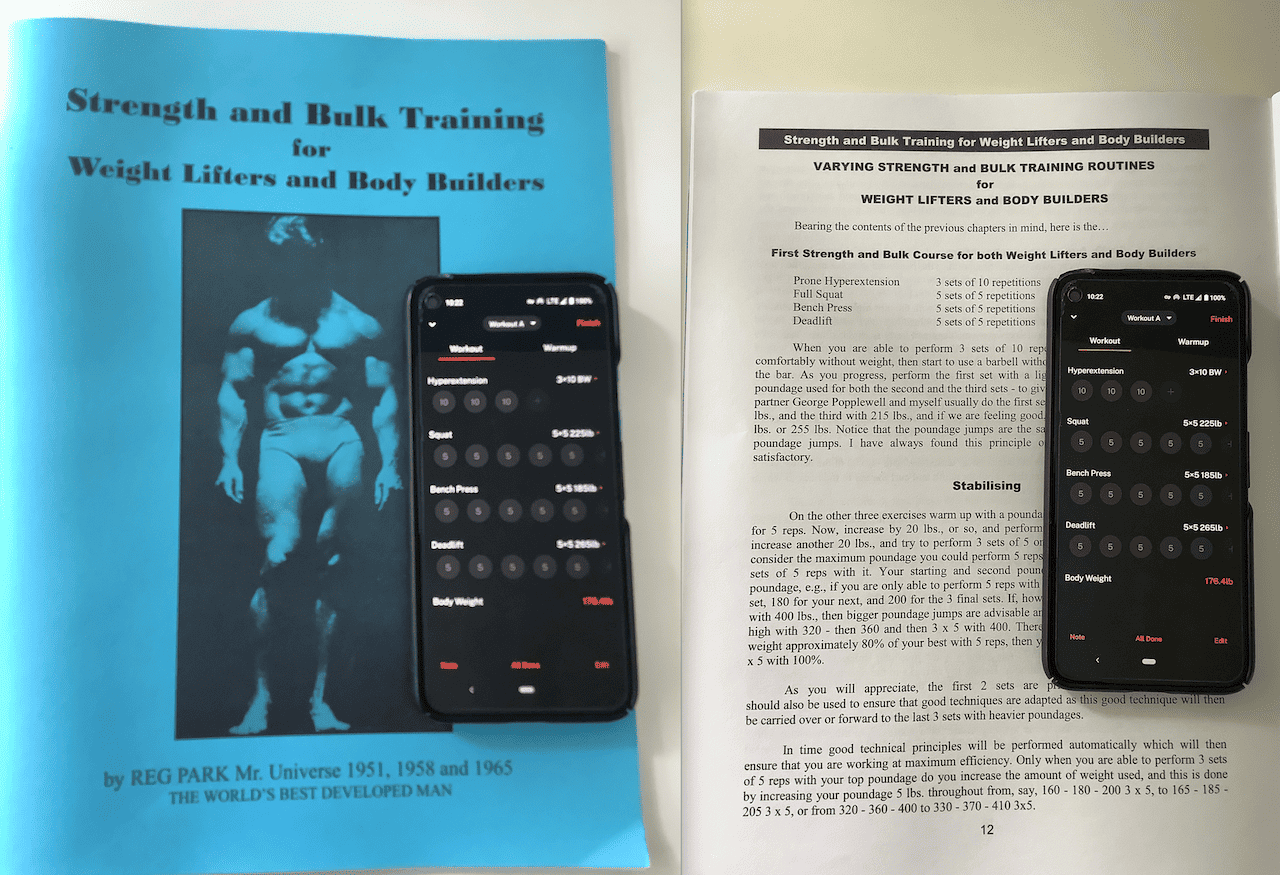
You can see the 5×5 workout on page 12 (right side).
How Reg Park Developed the 5×5 Workout
It’s not clear how Reg Park came up with the idea for the 5×5 workout. But he gives us a clue on page five of his book (5). Quote…
Daily I receive numerous letters from young men asking me how they can improve their physiques and gain more strength and size to lift heavier weights. Frankly, these letters puzzle me quite considerably, because today there are more physical culture magazines and more “authorities” than ever before and, therefore, I am unable to comprehend why so many weight trainers fail to make improvements.
The only reason I can see why this should be is because so many conflicting theories and methods are expounded that they confuse the weight trainer to such a degree that he does not know which method to follow or how to train.
Having traveled most extensively and having met lifters and bodybuilders the world over – and perhaps more important, being a bodybuilder who has always employed strength training principles, I think I can write with some authority on how better physiques and more strength can be developed.
Reg Park, “Strength and Bulk Training for Weight LIfters and Body Builders”, 1958, page 5 (5).
It sounds like Reg Park met many successful lifters during his travels. He condensed all the training principles that had worked for him and other lifters into a program that was easy to follow – the 5×5 workout. It was for all the lifters who mailed him for advice on how to build strength and muscle.
Reg Park’s Training Principles
Reg Park was a big believer of compound exercises like the Squat, and progressive overload (adding weight over time).

He explains why on page 7 of his book (5). Quote…
I believe that the first six to nine months of weight training should be designed to condition the new weight trainer and also to strengthen any particular physical weakness he may have. This can be best achieved by placing the beginner on a simple but progressive all round weight training course which is made of weight and strength gaining exercises.
The basic principle of strength and bulk training is quite simple. It is concerned purely with exercising the larger and stronger muscle groups such as the thighs, gluteus, back, chest and shoulders which such movements as the squat, deadlift and bench press which permit the weight trainer to handle progressively heavier poundages considerably in excess of those poundages he could handle when exercising the smaller muscle groups such as the the biceps.
Movements such as the squat, deadlift and bench press are what I term “primary strength exercises” – and all degrees of strength and bulk training should be built up around exercises of this nature.
Far too many bodybuilders spend too much time exercising the smaller muscle groups such as the biceps at the expense of the larger muscle groups such as the thighs, then they wonder why it is that they never make gains in overall size and strength.
Reg Park, “Strength and Bulk Training for Weight LIfters and Body Builders”, 1958, page 7 (5).
Reg Park thought that getting stronger on the big lifts was crucial, even if your main goal was to build muscle. Quote from page 11…
Strength is necessary in order to learn the simple techniques in weight lifting or body building and, therefore, you will appreciate that greater strength is necessary to learn advanced techniques…. the first six to nine months should be designed to condition the weight trainer and this can best be done by placing him on a simple but progressive all round strength course…. Every weight trainer should strive for all round body strength.
Reg Park, “Strength and Bulk Training for Weight LIfters and Body Builders”, 1958, page 11 (5).
Reg Park’s 5×5 workout
Reg Park never used the term “5×5 workout” for his program. In his book, he called it “Strength and Bulk Course for both Weight Lifters and Body Builders” (5). This program became known as the 5×5 workout over time because you did 5 sets of 5 reps on every exercise.
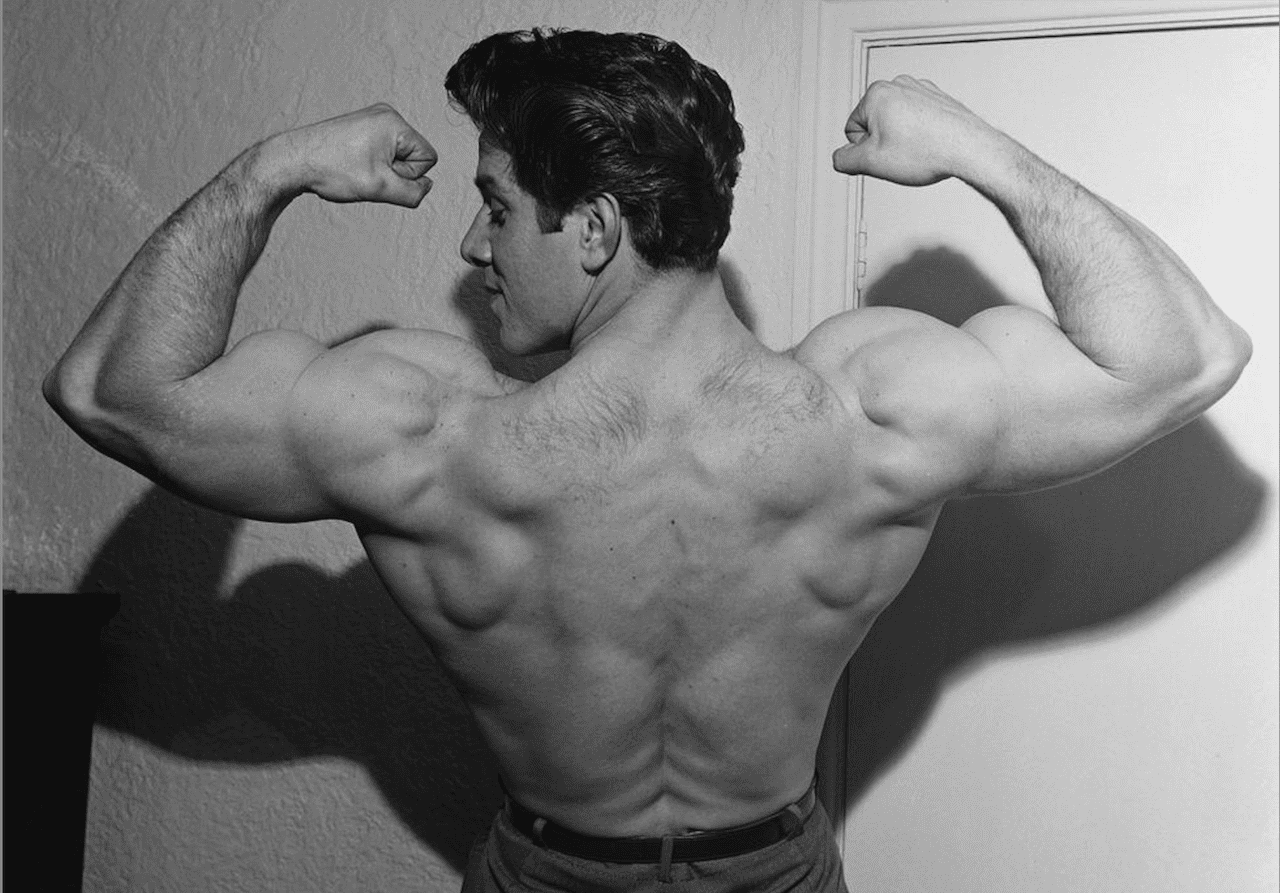
Reg Park’s 5×5 program consisted of a single workout that you repeated three times a week. Here’s his program…
| Reg Park 5×5 workout (1958) | ||
|---|---|---|
| Monday | Wednesday | Friday |
| Hyperextension 3×10 | Hyperextension 3×10 | Hyperextension 3×10 |
| Squat 5×5 | Squat 5×5 | Squat 5×5 |
| Bench Press 5×5 | Bench Press 5×5 | Bench Press 5×5 |
| Deadlift 5×5 | Deadlift 5×5 | Deadlift 5×5 |
Each workout started with hyperextensions. Reg Park thought that this could reduce the risk of lower back strain (5). The rest of the workout was an SBD day like in powerlifting – Squat, Bench, and Deadlift (10). This has led some people to believe that 5×5 is a powerlifting program. But powerlifting didn’t even exist when Reg Park wrote his book (11). More on this below.
You did the main lifts for 5×5 – five sets of five reps – using a combination of ramp sets (like on Madcow 5×5) and straight sets (like on Stronglifts 5×5). An example workout would be 5×160, 5×180, 5×200, 5×200, 5x200lb – three gradually heavier sets using ~10% jumps. You then repeated the third set twice. Between sets Reg Park recommended 3-5min rest.
If you completed all sets with good form, then you added 5lb on every set next workout. If you got stuck, then Reg Park recommended dropping the weight by 10% (a deload) and working your way up slowly again. After three months you moved to his next 5×5 workout which added more exercises.
The 5×5 Workout Has Its Roots in Bodybuilding
Some people think that the 5×5 workout is for powerlifting and that it doesn’t build muscle. But the father of 5×5, Reg Park, was a bodybuilder who won the Mr Universe, Mr Britain, and Mr Europe (5). In this video you can see him posing in 1957, one year before he published his 5×5 book.
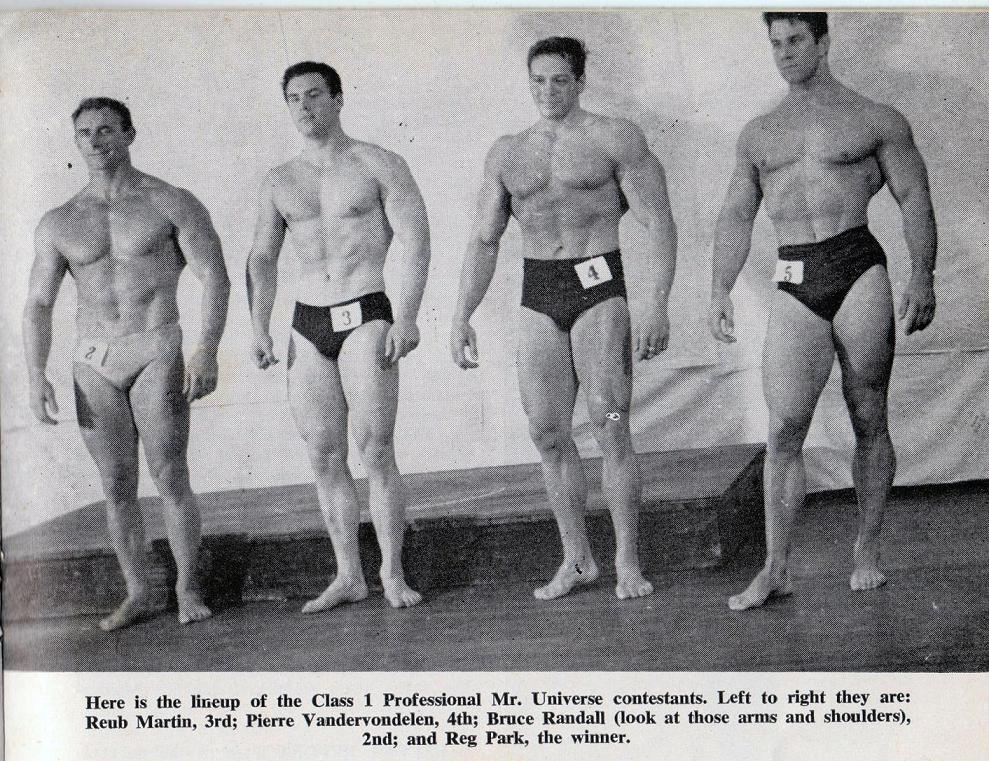
In fact, the sport of powerlifting didn’t even exist when Reg Park wrote his book about the 5×5 workout. The first powerlifting competition was held in 1964 at the York Barbell Company in the USA (11). Reg Park wrote his book about the 5×5 workout six years before that, in 1958 (5). He continued to compete as a bodybuilder from 1958 until 1973 (5, 12)
Reg Park never developed the 5×5 workout with powerlifting in mind. The sport had yet to be established when he wrote his book.
Some people think the 5×5 workout is for powerlifting because the focus is adding weight on the bar. They think this only builds strength but not muscle. This shows that despite an abundance of information, many people still do not know what makes muscles grow. Reg Park knew, quote…
I believe that from a body building point of view only physiques which have been developed by strength principles will bear the true characteristics of a champion physique, these characteristics in my opinion being maximum muscular size with definition and strength in proportion to one’s size as, for example, possessed by Grimek, Eder, Delinger, Brenner, Robert, Peals, and McShane, all of whom are not only champion bodybuilders but also extremely powerful men.
A muscle increase in size with use…. every muscle is made of fibers, many of which are never used, and as a result they remain small. When an increased strain is placed upon a muscle, more of these dormant fibers are brought into play and if progressive resistance is put on to a muscle more and more fibers are used and grown in size. Therefore, you can see that increased muscular size is brought about by increasing the poundages handled.
Reg Park, “Strength and Bulk Training for Weight LIfters and Body Builders”, 1958, page 8 (5).
Reg Park was right and ahead of his time. Research has since confirmed that muscular tension is the main driver of muscle growth (13, 14). In order for a muscle to grow, you need to increase the tension on your muscles. You need to apply progressive overload (15). The easiest way to do this is to add weight on the bar. If you’re not lifting more weight than six months ago, you won’t have more muscle regardless of how pumped or sore you got.
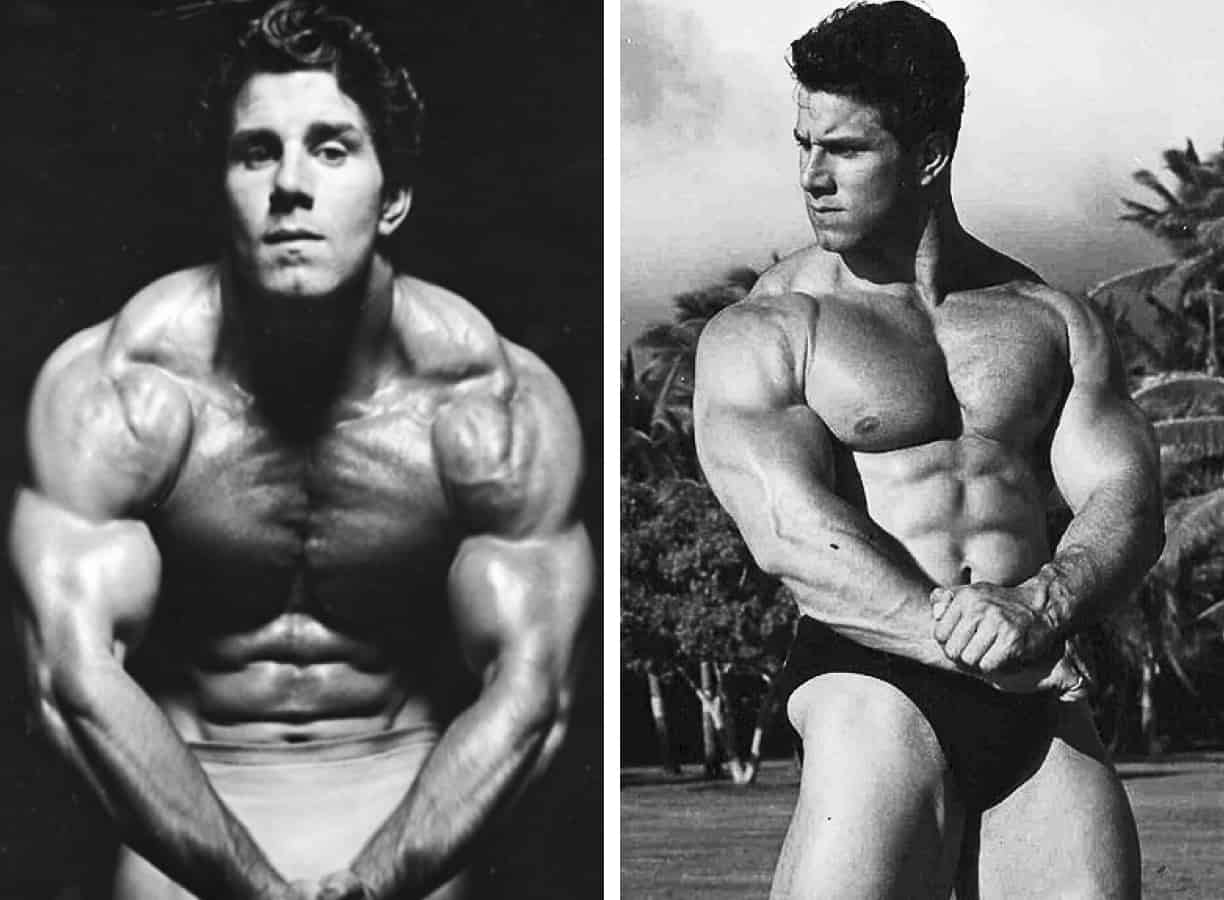
In fact, the American College of Sports Medicine has exercise guidelines for fitness professionals who create training programs (15). It states…
As the trained muscles strengthen and enlarge (hypertrophy), the resistance must be progressively increased if additional gains are to be accrued.
The American College of Sports Medicine (15)
Progressive overload is the fundamental principle of resistance training (16). Fundamental means that if you’re not applying progressive overload, your program can’t work because it doesn’t have the fundamentals in place. It’s not about getting pumped, sore, timer under tension, or doing lots of sets and exercises with light weights. It’s about doing more work over time by adding weight on the bar. That’s the main driver of muscle growth.
This is why so many people who struggled to build muscle finally did so with the 5×5 workout. It was the first time that they applied the fundamental principle of progressive overload. The 5×5 workout centers around adding weight on the bar. By consistently increasing the amount of weight they lifted, they achieved muscle growth they could never achieve before.
Why The 5×5 Workout Has Stood The Test of Time
The fitness industry is known for being full of fads. Every day there’s a new workout that promises to be the best thing ever. It can be hard to tell which ones are effective and which ones are just gimmicks. Most workout programs don’t last long and disappear as quickly as they came.
The 5×5 workout has been the proven way to build strength and muscle for 67 years. It’s still around because it’s effective. Lots of people have seen great results by focusing on compound lifts and adding weight over time.
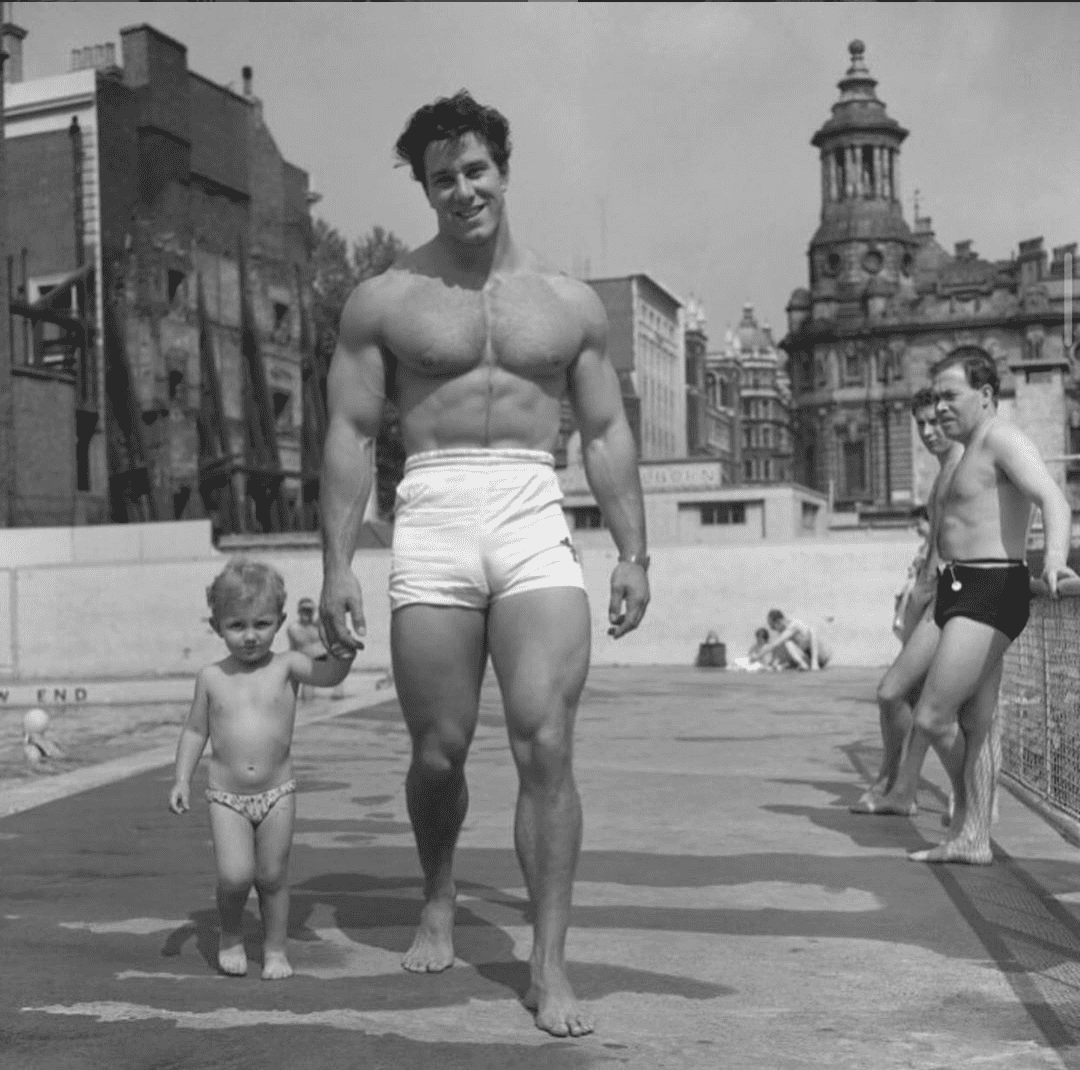
The 5×5 workout is simple and easy to follow (especially with the app). The best program is the one you can actually stick to. Many people lack time to exercise (17). The 5×5 workout is only three exercises, three times a week. You can finish in less than an hour. This makes it easy to stick to for busy people with limited time. Consistency is key to getting results.
Some want to argue that the 5×5 workout is “old” and “outdated”. But the effectiveness of a program is not determined by how new or “modern” it is. The principles of strength and muscle building haven’t changed since Reg Park wrote his book in 1958. Progressive overload is still the most important factor for building strength and muscle today (13, 14, 15, 16). That’s why the 5×5 workout has continued to be popular and effective for almost seven decades, and will continue to be.
Besides, the Stronglifts app tracks and plans your 5×5 workouts. That makes it modern and easy to follow, unlike “newer” programs still sold as bulky pdfs and inconvenient spreadsheets. The 5×5 workout doesn’t just follow proven training principles but also makes things simpler with modern tech.
Other Authors of The 5×5 Workout
Many lifters and coaches have recognized the effectiveness and simplicity of the 5×5 workout over the past seven decades. They continued Reg Park’s legacy by writing about the program and promoting its benefits.
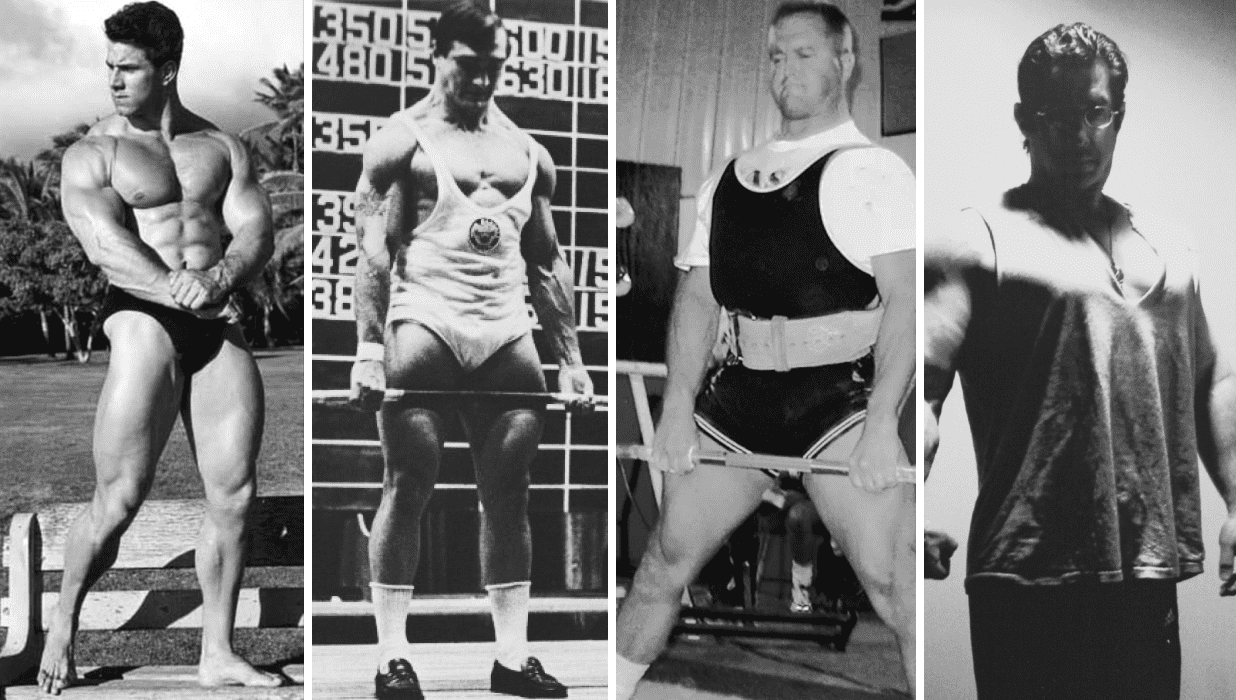
Here are the most notable coaches and authors who contributed to the 5×5 workout material…
Bill Starr’s 5×5 workout
Bill Starr was a weightlifter, writer and strength & conditioning coach (18, 19).
From 1966 to 1972 Bill Starr was the editor of the muscle magazine “Strength & Health” (18). He worked as a strength coach for American football teams including the NFL Baltimore Colts (20). He broke national records in Olympic weightlifting and powerlifting (20). His best lifts included a 500lb Squat, 395lb Bench and 665lb Deadlift at 198lb body weight (21).
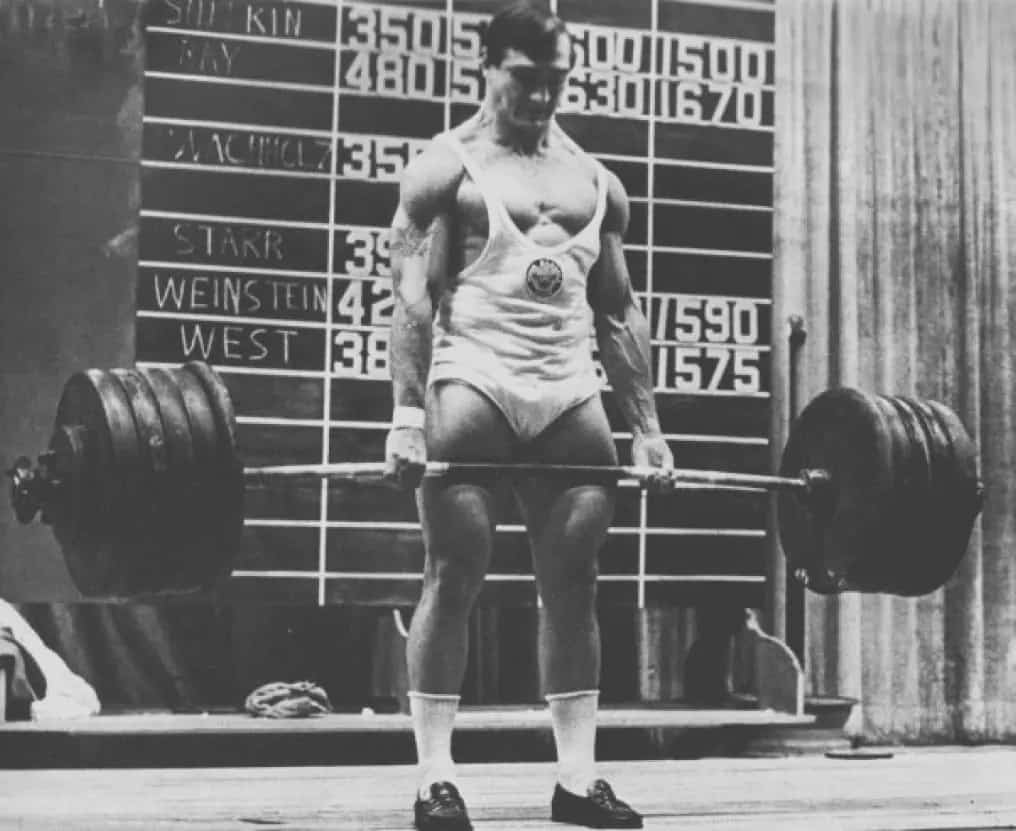
In 1976, Bill Starr wrote the book “The Strongest Shall Survive: Strength Training for Football“. It had several 5×5 workouts intended for football players wanting to gain strength, size and speed. However like Reg Park before him, Bill Starr never used the term “5×5 workout”. He called his program the “Big Three” because it revolved around three compound exercises.
Here’s Bill Starr’s “Big Three” 5×5 workout as published on page 57-58 of his book in 1976 (20)…
| Bill Starr’s 5×5 workout (1976) | ||
|---|---|---|
| Heavy | Light | Medium |
| Power Clean 5×5 | Power Clean 5×5 | Power Clean 5×5 |
| Bench Press 5×5 | Bench Press 5×5 | Bench Press 5×5 |
| Squat 5×5 | Squat 5×5 | Squat 5×5 |
| Hyper-extension | Hyper-extension | Hyper-extension |
| Leg curl | Leg curl | Leg curl |
Like Reg Park’s 5×5 workout, Bill Starr’s program consisted of one workout that you did three times a week. But there were several differences:
- There were no Deadlifts. Bill Starr thought they weren’t worth the risk of injury for football players (20). Instead you did Power Cleans.
- Power Cleans were done first because they’re a more technical and explosive lift. The heavier and harder Squats were done last.
- You alternated heavy, light and medium days. On the light day you lifted 80% of your heavy day. On your medium you lifted 90%.
- You did 5×5 ramp sets, not straight sets. Example: 5×135, 5×165, 5×185, 5×205, 5x225lb (similar to Madcow 5×5).
The biggest difference – which nobody ever mentions – is that Bill Starr’s 5×5 workout used the circuit method (20). Unlike all other 5×5 workout programs, you didn’t complete five sets on one exercise before moving to the next one. Instead, you did one set of cleans, one set of bench, one set of squats. You then repeated this sequence until you completed five sets in total.
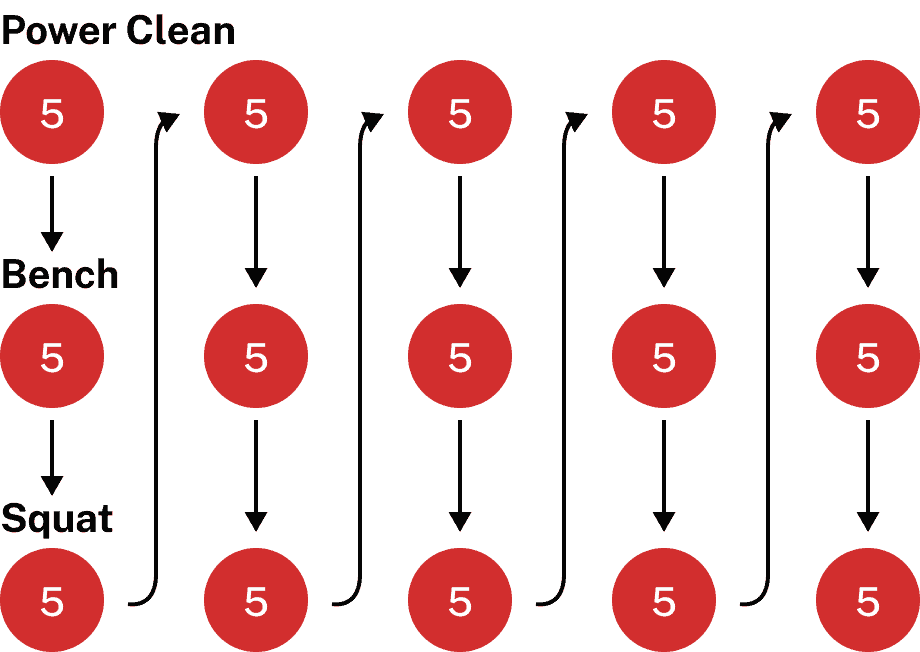
Bill Starr’s 5×5 workout used the circuit method because it was used by large groups of football athletes. This saved time because they didn’t have to wait their turn to use the equipment. It also increased cardiovascular fitness more, which was important for their sport.
Reg Park never explained why he picked 5×5 for the sets and reps. However Bill Starr gives us an explanation in his book on page 56 (20). Quote…
Once I had sorted out the specific exercises that would do the job most effectively, my next task was to assemble them into a working order. It was back to the research library to see what the pure scientists had uncovered on the subject….
The researchers found that 4-6 repetitions of 4-6 sets, increasing the weight on each successive set, produced the most significant increase in strength. Terrific.
I simplified the formula to five sets of five reps as that was the exact median and it was easy to remember.
Bill Starr, The Strongest Shall Survive, 1976, page 56 (20)
Some people have taken this quote out of context, claiming that Bill Starr only picked 5×5 because it was easy to remember. If they actually read his book they would see that this wasn’t the case. Bill Starr picked 5×5 because the research showed that 4-6 sets of 4-6 reps was best for getting stronger. The fact that 5×5 was easy to remember was just the icing on the cake.
Programs that are easier to remember and implement will always produce better results. People are more likely to stick with it and follow it consistently. Bill Starr made the program more effective by picking 5×5. Downplaying this is underestimating the importance of simplicity. The 5×5 workout has worked for many people because it’s simple and easy to follow.
Stuart McRobert’s 5×5 workout
Stuart McRobert is a bodybuilder, the founder of Hardgainer magazine and the author of six books (22). He has written more than 1000 articles on how to build muscle as a drug-free lifter who isn’t genetically gifted.
In 1991, Stuart McRobert wrote the book “Brawn“. He recommended short workouts of 2-4 compound exercises with the focus on progressive overload. Chapter 10 had several example training programs that followed his training principles. One of them was a 5×5 workout. Here it is…
| Stuart McRobert’s 5×5 workout (1991) | |
|---|---|
| Workout A | Workout B |
| Squat 5×5 | Stiff-legged Deadlift 5×5 |
| Bench Press 5×5 | Calf Raise 5×10-15 |
| Pullup 5×5 | Overhead Press 5×5 |
This was the first 5×5 workout that used two alternating workouts A and B. Reg Park and Bill Starr’s 5×5 workouts repeated the same workout 3x/week. Their programs were simpler and increased the amount of practice per lift for better form. However, the lack of variety could get boring fast, and the weight progression could be too fast. Alternating a workout B with different exercises slows down the weight progression and can reduce boredom.
The key point is that the engine that drives the gains in the small areas is the progress being made in the big areas. If you take it easy on thigh and back work you will, generally speaking, have trouble making big gains in the other exercises, no matter how hard you work the latter…. Few people can get big arms without having a big body. You’re unlikely to be one of the exceptions.
Stuart McRobert, Brawn, 1991, Chapter 12
Stuart McRobert didn’t call his program a 5×5 workout. It was simply one of his “abbreviated routines” – short workouts focused on a few compound exercises. He did use terms like “5×5 format” and “5×5 scheme”. And he recommended five straight sets of five reps using the same weight like on Stronglifts 5×5. Here’s another quote from his book…
To do the 5×5 format, do five sets of five reps with the same poundage (following warmup sets). When you make all five sets of five (25 reps total), increase the poundage by five pounds at the next workout…. When you’re really working hard to get out of the 5×5, get your tiny discs out and just add one or two pounds to the bar each increment.
Stuart McRobert, Brawn, 1991, Chapter 10
Stuart McRobert kept recommending the usage of fractional plates (“tiny discs”) in his book. As far as I can tell, he was the first one to recommend progressing the 5×5 workout using small increments of only 1-2lb.
John Christy’s 5×5 workout
John Christy was a lifter and coach with a background in exercise physiology. In 2006 he published the book “Real Strength Real Muscle“. Page 87 featured the article “The Only Way” that he wrote in 1997 for Hardgainer magazine. This was the workout that he recommended for beginners…
| John Christy’s 5×5 workout (1997) | |
|---|---|
| Workout A | Workout B |
| Crunch 2×5 | Side bend 2×5 |
| Squat 2×5 | Deadlift 2×5 |
| Stiff-legged Deadlift 1×15 | Seated Overhead Press 2×5 |
| Bench Press 2×5 | Barbell Curls 2×5 |
| Lat Pulldowns 2×5 | Grip work |
| Grip work | |
John Christy’s 5×5 program alternated two workouts A and B like Stuart McRobert’s. But you only did two sets of five reps per exercise. There were also extra assistance exercises for the abs, back, arms and grip.
Less experienced lifters often fixate on minor differences between programs. They do this because they search for the “perfect program” that will give the fastest results. The reality is that 80% of your results come from 20% of your effort (Pareto’s Principle). We have to look at the big picture instead of getting lost in tiny details. The main idea of John Chrisy’s 5×5 workout was to do compound exercises and apply progressive overload. Quote…
How was 1996 for you? Are you stronger now than you were in January of 1996? Because if you’re not, your training year was wasted….
Face the fact that you have to get stronger – lift more weight – in a major leg movement like the squat, deadlift, or leg press, a major pushing movement like the bench press, military press, or dip, and a major pulling movement like the weighted chinup, pulldown, or dumbbell row….
As simple as this philosophy sounds, most trainees don’t have faith that something so simple works so well. They would rather fool themselves into thinking that there is some other way….
You see, the body adapts neurologically to lifting a weight at first. In other words, your initial strength gains through the first several months are a result of your body learning to use more efficiently the muscle that it already has. Actual tissue remodeling, or the growing of new muscle tissue, doesn’t occur until a couple of months or so beyond the initial stimulus. That’s why it is most important to stay patient and work very hard to handle the heavy weights for a long time.
John Christy, Real Strength Real Muscle, 2006, page 87 (23)
John Christy was right. Research shows that most of your initial gains when you start lifting are neural in nature (13). Your body gets better at lifting the weights using your existing muscles. Building muscle is a slower process like growing longer hair or nails. That’s because it requires adding tissue.
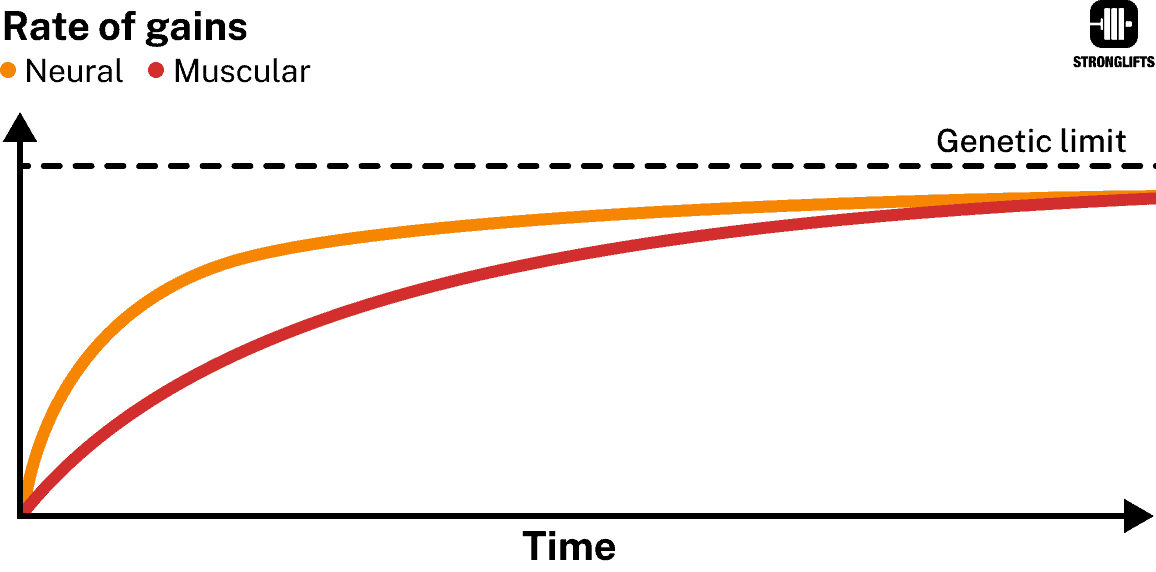
Less experienced lifters often have unrealistic expectations about how long it takes to build muscle without the use of anabolic steroids. This can lead them to believe that a program isn’t working because they don’t see immediate muscle gains. It’s like looking at grass every day and wondering why it’s not growing. The reality is that it takes time for muscle to grow. The problem is usually not the program itself but simply a lack of patience.
Brooks Kubik’s 5×5 workout
Brooks Kubik is a powerlifter and national champion (24, 25). He competed in equipped powerlifting from 1991 to 1993 (24). His best lifts include a 507lb Squat, 402lb Bench and 490lb Deadlift at 198lb body weight.
Brooks Kubik is also the author of several books. His most popular one was “Dinosaur Training” in 1996. This was one of the first books I read 20 years ago when I discovered that you didn’t have to train like a bodybuilder. You could build muscle by training for strength too. Here’s a quote from chapter 12, called “keep it simple” (sounds familiar?!?)…
Strength training is a simple, uncomplicated activity. It’s hard to do, of course, but it’s not hard to learn WHAT to do…. Which brings us to the following question: IF STRENGTH TRAINING IS SO SIMPLE WHY DO SO MANY PEOPLE FAIL TO GET RESULTS?
Good question, eh?
Here’s the answer: PRODUCTIVE TRAINING SEEMS TOO SIMPLE TO WORK, SO PEOPLE IGNORE THE PRODUCTIVE SYSTEMS AND LOOK FOR COMPLEX SYSTEMS THAT DON’T DELIVER.
Brooks Kubik, Dinosaur Training, 1996, page 106-107.
Guilty! I also thought the 5×5 workout looked too simple to work. Brooks Kubik recommended simple and basic routines. 3-4 compound lifts per workout with the focus on progressive overload. On page 112 he showed a simple program that included all his training principles. Here it is…
| Brooks Kubik’s 5×5 workout (1996) | |
|---|---|
| Workout A | Workout B |
| Squat 4×5 | Deadlift 4×5 |
| Overhead Press 4×5 | Bench Press 4×5 |
| Barbell Row 4×5 | Sandbag walk |
| Farmer walk | Side bends |
| Situps | |
This 5×5 workout had four sets of five reps. You would do them in a ramp set fashion like on Madcow 5×5. Example: 5×185, 5×205, 5×225, 5x245lb. There was extra assistance work for grip and abs. But the core idea was, as always, to do compound lifts and apply progressive overload.
Brooks Kubik didn’t call this a 5×5 workout. But he talked about the “5×5 training system” in chapter 10 and kept quoting Reg Park (25).
Glenn Pendlay’s 5×5 workout
Glenn Pendlay was a weightlifting coach who produced more than hundred national champions (26). You might know him from “Pendlay Rows“. In 1999 he set up Wichita Falls Weightlifting where he developed the Texas Method (26). In 2006 he moved to California Strength where he became the head coach and helped many weightlifters win national medals (27).
During the early 2000s, Glenn Pendlay wrote about the 5×5 workout on Internet forums under the alias “JohnSmith” (28). The first time I heard about the 5×5 workout was after finding his posts. I didn’t know it was him. I didn’t even know who he was. But I was intrigued by what he wrote. Quote…
—5X5—
Monday: Squats, Benching, Rows
Weds: Squats, Military Presses, Deadlifts, Chins
Friday: Squats, Benching, RowsCourtesy of bill starr, the greatest strength coach who ever lived, popularized this in the 70’s with his great book, The Strongest Shall Survive, which was aimed at strength training for football…. For more advanced lifters, he advocated a warmup, then 5 sets of 5 with a set weight. For example, the same athlete used in the other example may do 135 for 5, 185 for 5, 225 for 3, 275 for 2, 315 for 1, then 350 for 5 sets of 5. When successful with all 25 reps at 350lbs, bump the weight up the next workout by 5 or 10lbs.
“JohnSmith” aka Glenn Pendlay, early 2000s (28).
It was that simple. So simple I couldn’t believe this could work. But this was eventually the first 5×5 workout I did in 2004. Here’s Glenn Pendlay’s 5×5 workout in an easier to read table format…
| Glenn Pendlay’s 5×5 workout (2000s) | ||
|---|---|---|
| Monday | Wednesday | Friday |
| Squat 5×5 | Squat 5×5 | Squat 5×5 |
| Bench Press 5×5 | Overhead Press 5×5 | Bench Press 5×5 |
| Barbell Row 5×5 | Deadlift 5×5 | Barbell Row 5×5 |
| Chinups | ||
You can see how similar this looks to the Stronglifts 5×5 program that I would put on this website several years later.
Madcow’s 5×5 workout
Madcow was an anonymous Internet user in the early 2000s. He posted about the 5×5 workout on various forums (29, 30).
Four years later he created the first website with several 5×5 workouts and spreadsheets (31). It was all free like most of the Internet at the time. His most popular work was “Bill Starr 5×5 linear version for intermediate lifters”. This program later became known as “Madcow 5×5” to avoid confusion with the original 5×5 workout in Bill Starr’s book from 1976.
| Madcow 5×5 workout (2005) | ||
|---|---|---|
| Workout A | Workout B | Workout C |
| Squat 5×5 | Squat 4×5 | Squat 4×5, 1×3, 1×8 |
| Bench 5×5 | Incline Bench 4×5 | Bench 4×5, 1×3, 1×8 |
| Rows 5×5 | Deadlift 4×5 | Rows 4×5, 1×3, 1×8 |
| Assistance | Assistance | Assistance |
Madcow 5×5 alternated heavy, light and medium workouts. The 5×5 were ramp sets – five gradually heavier sets of five reps. There was a variety in rep ranges with sets of three reps in workout C followed by back-off sets of eight reps. There was assistance work for the arms and abs because Madcow was active on the two largest bodybuilding forums at the time (elitefitness and bodybuilding.com). No direct arm work was a hard sell for them.
But the core idea remained: short workouts consisting of big compound exercises, with the focus on progressive overload. Quote…
So what’s the deal with the 5×5 stuff? Well, first it tends to focus on the most effective lifts or the ones with the highest potential for hypertrophy. We are not concerned with balancing the outer head of the triceps here, this is for pure muscle, triceps are included but nothing in isolation is being heavily focused on….
How do you think people get bigger exactly? A bigger muscle is a stronger muscle – what do you think your body is adapting to when it adds muscle as a result of exercise? Why is resistance at a fairly high percentage of your maximal effort necessary for hypertrophy? I mean, you don’t get too big walking around and bodyweight exercises seem to cap out after a while….
No one added significant muscle that didn’t add weight to the bar or just do a ton more work. You are stressing the muscular system here and the adaptation of hypertrophy is a method the body uses to cope and improve to be able to better tolerate the stress.
Madcow, Basic Training Primer, 2005 (31)
It’s not clear who Madcow was. He said he spent many afternoons on the phone with Glenn Pendlay to understand the 5×5 workout.
Pavel Tsatsouline’s 5×5 workout
Pavel Tsatsouline is the author of several strength training books. He’s best known for popularizing kettlebells in the late 90s. In 2000 he published “Power to The People“. On page 102 he shared his “3-5 method”. Quote…
…. cut your reps to five and under. To avoid cumulative fatigue bump up the rest intervals between the sets to—gasp!—three to five minutes, and keep your set total to five and under. You can easily remember this as the ‘3-5 method’: 3-5 sets, 3-5 reps, 3-5 minutes of rest between sets.
Pavel Tsatsouline, Power to the People, page 102 (2000).
Five years later he published the book “Beyond Bodybuilding“. On page four he developed the idea further, and gave example workouts.
The “3 to 5” Method
Pavel Tsatsouline, Beyond Bodybuilding, page 104 (2005).
3-5 exercises (total for the whole body)
3-5 sets
3-5 repetitions
3-5 minutes rest between the sets
3-5 days of rest for each exercise
Pavel’s books were revolutionary at the time. He questioned the popular bodybuilding approach to training where the focus is only on looking strong. Why not be strong as well? This was music to my ears.
Stronglifts 5×5 workout
In June 2007, one month after Stronglifts went online, I published a free 5×5 workout guide on this website. The early Stronglifters asked me for a program. The 5×5 workout seemed like the obvious choice. It was simple, easy to follow, and didn’t take much time. Plus it was super effective.
| Stronglifts 5×5 workout (2007) | |
|---|---|
| Workout A | Workout B |
| Squat 5×5 | Squat 5×5 |
| Bench Press 5×5 | Overhead Press 5×5 |
| Barbell Row 5×5 | Deadlift 1×5 |
| Assistance Work | Assistance Work |
When I say that I found the 5×5 workout through Glenn Pendlay, you can see it by just looking at the program. It looks almost exactly like the program he posted on forums in the early 2000s. There were a few small differences based on my experience giving the 5×5 workout to my friends.
- I removed workout C and made it A/B like the 5×5 workouts of Stuart McRobert, John Christy and Brooks Kubik. It simplified the workout schedule. Remember smartphones and apps weren’t a thing yet at the time. Most people used pen and paper, or just remembered it.
- I recommended new lifters to start with the empty bar. My mentor made me Squat too heavy the first time. I ended up puking and had sore legs for a week. Somehow I came back but I figured most people wouldn’t. Starting with the empty bar eased them into the program. Progress was guaranteed which increased motivation and consistency. All you had to do was to start with the bar and work your way up. Simple.
- I suggested extra assistance work like Madcow did. Many lifters just can’t believe that small muscles like the arms can grow bigger if you only do compound lifts without direct arm work. Even I couldn’t believe this when I found the 5×5 workout in 2003. So I added optional exercises for the arms and abs to put people at ease.
- Deadlift was only 1×5. Five sets made workout B too long and too hard. The Squat volume drove the Deadlift progress anyway. Glenn Pendlay explained that his athletes started doing 1×5 in some workouts later, which became the Texas Method (26).
Like Reg Park, Bill Starr, and so many authors who came before me, I didn’t call this a “5×5 workout”. It’s not about doing 5×5. It’s about doing compound lifts and applying progressive overload. And so I called it… “beginner strength training program”. Stronglifters just called it “Stronglifts 5×5”. That was shorter and sounded a lot better. So I changed the name.
To my surprise the Stronglifts 5×5 workout guide went viral. This website reached 1.5 million unique visitors a month at its peak. It felt like the whole Internet was doing 5×5 at some point. Apple featured the Stronglifts app during the Super Bowl. Millions of people downloaded the app. The British Journal of Sports Medicine even featured Stronglifts (32).
Some people say that Stronglifts had the biggest impact on popularizing the 5×5 workout. It made it free and accessible through the internet, and easy to follow using the Stronglifts app. I’ll let you be the judge of that.
Join the Stronglifts community to get free access to all the spreadsheets for every Stronglifts program. You’ll also get 17% off Stronglifts Pro, and daily email tips. Enter your email below to sign up today for free.
References
1. Fair, John D. “Isometrics or Steroids? Exploring New Frontiers Of Strength in the Early 1960s.” Journal of Sport History, vol. 20, no. 1, 1993, pp. 1–24.
2. Todd, Terry, and John Hoberman. “Yearning for Muscular Power.” H.J. Lutcher Stark Center for Physical Culture and Sports, Jan. 2007.
3. Roach, Randy. Muscle, Smoke, and Mirrors. AuthorHouse, 2008.
4. IOC. “Berlin 1936 82.5kg Heavyweight Men Results – Olympic Weightlifting.” Olympics.com
5. Park, Reg. “Strength & Bulk Training for Weight Lifters & Body Builders”. 1958.
6. “Reg Park Bench Press.” Youtube.
7. “Reg Park | Actor.” IMDb.
8. Schwarzenegger, Arnold. “A Tribute by Arnold Schwarzenegger.” Reg Park – The Body Building Legend Lives On.
9. Schwarzenegger, Arnold. Arnold: The Education of a Bodybuilder. Simon & Schuster, 2012.
10. “Technical Rules.” International Powerlifting Federation IPF – International Powerlifting Federation IPF.
11. “History.” International Powerlifting Federation IPF – International Powerlifting Federation IPF.
12. “Biography – Reg Park.” Reg Park – The Body Building Legend Lives On.
13. Schoenfeld, Brad J. “The mechanisms of muscle hypertrophy and their application to resistance training.” Journal of strength and conditioning research vol. 24,10 (2010): 2857-72.
14. Goldberg, A L et al. “Mechanism of work-induced hypertrophy of skeletal muscle.” Medicine and science in sports vol. 7,3 (1975): 185-98.
15. Garber, Carol Ewing et al. “American College of Sports Medicine position stand. Quantity and quality of exercise for developing and maintaining cardiorespiratory, musculoskeletal, and neuromotor fitness in apparently healthy adults: guidance for prescribing exercise.” Medicine and science in sports and exercise vol. 43,7 (2011): 1334-59.
16. Kraemer, William J, and Nicholas A Ratamess. “Fundamentals of resistance training: progression and exercise prescription.” Medicine and science in sports and exercise vol. 36,4 (2004): 674-88.
17. Trost, Stewart G et al. “Correlates of adults’ participation in physical activity: review and update.” Medicine and science in sports and exercise vol. 34,12 (2002): 1996-2001.
18. “Bill Starr.” USA Strength and Conditioning Coaches Hall of Fame.
19. “Bill Starr, 1938-2015 by Mike Warkentin.” CrossFit Journal, 10 Apr. 2015.
20. Starr, Bill. “The Strongest Shall Survive: Strength Training for Football.” Ann Arbor, MI: Sheridan Books. 1976.
21. “Bill Starr.” Powerlifting Ranking.
22. “Hello, this is Stuart McRobert.” HardGainer.com.
23. Christy, John. “Real Strength Real Muscle.” Total Strength Publications. 2006.
24. “Brooks Kubik.” Powerlifting Ranking.
25. Kubik, Brooks D. “Dinosaur Training: Lost Secrets of Strength and Development.” 1996.
26. Ostrowicz, Seb. “The Glenn Pendlay Method.” Powerful Ideas Press, 2020.
27. “Remembering Glenn Pendlay.” Team USA. https://web.archive.org/web/20230602091746/https://www.teamusa.org/USA-Weightlifting/Features/2019/September/05/Remembering-Glenn-Pendlay
28 “Best of JohnSmith articles.” MESO—Rx, https://web.archive.org/web/20060105141448/http://forum.mesomorphosis.com/showthread.php?t=12
29. “View Profile: Madcow2.” EliteFitnesscom Bodybuilding Forums, https://www.elitefitness.com/forum/members/Madcow2.html.
30. “Workout Programs.” Bodybuilding.com, https://forum.bodybuilding.com/showthread.php? t=1005637&p=13387236#post13387236.
31. Madcow. “Madcow’s 5×5 and Training Theory and Information Site.” Geocities Archive Geocities Mirror / The 90s Archive (1990s 2000s Nineties) / The Early Web, https://www.oocities.org/elitemadcow1/.
32. Anderson, Nash et al. “StrongLifts 5×5 Workout: mobile app user guide.” British journal of sports medicine vol. 52,14 (2018): e3.




